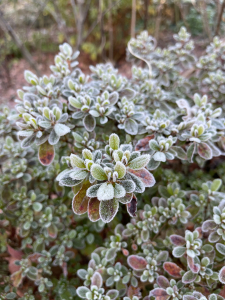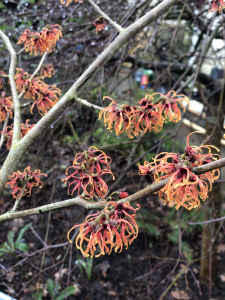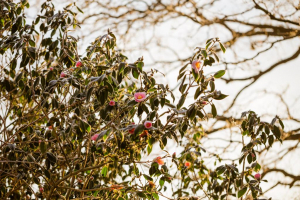These short days and dark evenings may seem like a dormant time for gardens, but it is actually a crucial period for garden and planting design. Assessing what a garden needs in the winter cannot be underestimated, as continued planting design provides the structure for a garden’s overall aesthetic. Without the distraction of vibrant blooms and lush foliage, the winter garden reveals the true layout of its design.
When visiting a new garden design commission, it is advantageous to see it during the quiet of winter. Winter is the perfect time to observe a garden’s structure or lack thereof, without the busy froth of spring and summer. It is during this time that you can truly see the wood from the trees and see the space for what it truly is. We encourage sustainability in every project, view our sustainable sandbanks garden project here.

The Perfect Plants for Winter Weather
One of the most captivating aspects of the winter garden is the presence of frost. Delicate ice crystals can cover the leaves of plants such as Pittosporum and Azalea, highlighting their edges and adding a touch of beauty. Ballotta leaves for example, when covered in frost, come to life in a visual display. Seed heads of plants like Phlomis, Verbena, Monarda, Echinacea, and Rudbeckia provide interesting textures and shapes. Ornamental grasses, such as Pennisetum alopecuroides ‘Hameln’ and Miscanthus sinensis ‘Morning Light’ provide movement and are a valuable addition to the palette for planting design in the winter garden.
Evergreen plants play a vital role in winter. Sarcococca and Daphne, with their fragrant blooms, can be strategically positioned near doorways to provide a delightful waft of scent throughout the garden. These evergreen plants not only contribute to the overall structure of the garden but also provide a sensory experience for visitors.
Leaving perennial plants in the garden during winter is also crucial for maintaining structure. Plant
s such as Phlomis, Echinacea, and Astilbe may not be in full bloom during this time, but their architectural forms add interest and texture to the garden. These perennials also provide habitat and food sources for wildlife, further enhancing the garden’s ecological value.

Cultivating a Wildlife Garden in the Winter
Winter berries are another essential element of planting design in the winter garden. Plants like Holly, Cotoneaster, and Euonymus (spindle) produce vibrant berries that can provide a pop of colour against the muted winter landscape. These berries also serve as a valuable food source for wildlife, attracting birds and other animals to the garden. Additionally, shrubs and trees such as Hazel and Garrya display elegant catkins, adding an extra layer of interest and texture. To encourage wildlife to flourish, check out our last blog, where you can find the top 10 tips for developing a wildlife garden.
Winter bulbs, such as Cyclamen and Snowdrops, offer a burst of colour and life during the colder months. These delicate flowers emerge from the earth, defying the harsh conditions and signalling the imminent arrival of spring. Snowdrops, Crocus, and Iris reticulata are particularly cheery enchanting, dotting the garden with their vibrant hues and signs of life emerging.
The Importance of Winter Garden Design
There is something truly magical about the reset and seemingly quiet time in the garden during winter. It is a time to appreciate the last remaining rose, without the busyness of spring and summer. It is a time of anticipation for the coming season, as plants begin to rise from the earth. Snowdrops, crocus, and iris reticulata are just a few examples of the plants that herald the arrival of spring, reminding us of the cyclical nature of the garden. It is also a time to assess what your garden needs and how you can best optimise the space for the next season.
In conclusion, garden and planting design is of utmost importance throughout the winter. The winter provides the perfect opportunity to assess your garden design. From frost-kissed leaves to winter berries and scented flowers, winter can provide an opportunity to create a unique space.

Click here to see more images on the website. Contact us now 07834 233 343, we can assist you with your garden design, jenny@noscoegardendesign.com
